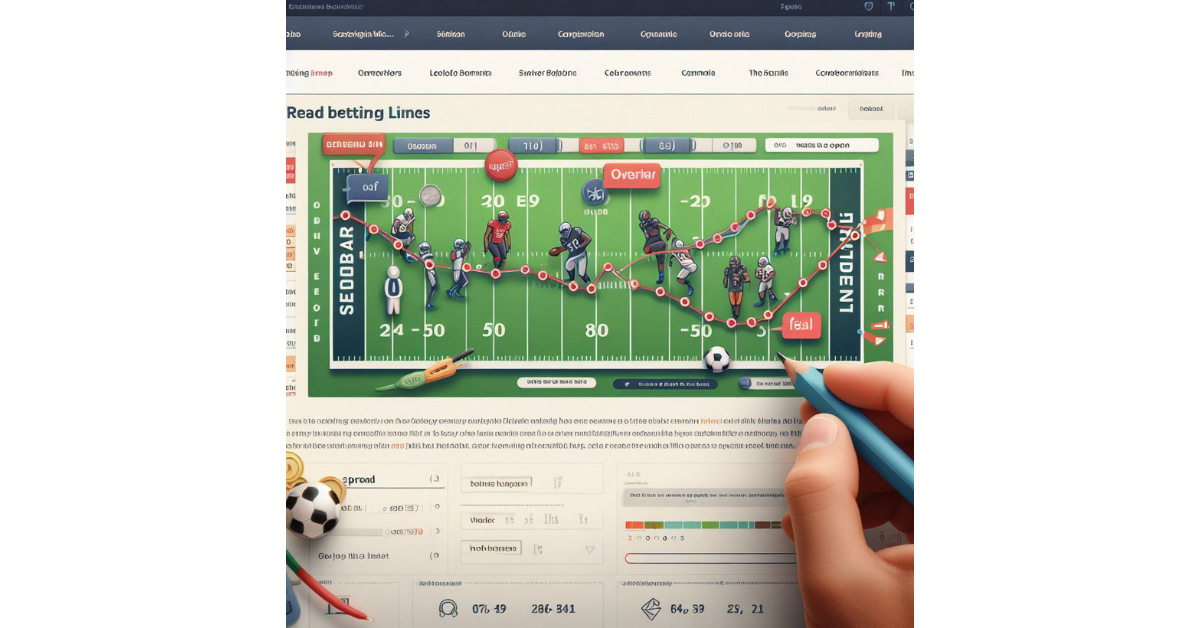Understanding the Basics of Betting Lines
Betting lines are fundamental in the world of sports betting, serving as the foundation upon which wagers are placed. These lines provide valuable information about the likelihood of a particular outcome in a sports event. Understanding how to read and interpret betting lines is crucial for anyone looking to engage in sports betting.
Betting lines typically consist of two main components: the point spread and the moneyline. The point spread indicates the predicted margin of victory for a favored team, while the moneyline represents the odds associated with betting on either team to win outright. By grasping these basic concepts, bettors can make informed decisions when placing their bets.
Different Types of Betting Lines
When it comes to sports betting, there are primarily three types of betting lines that are commonly used: point spreads, moneylines, and totals (over/under). Point spreads are used in sports like football and basketball, where a specific number of points are either given to the underdog or taken away from the favorite to even the playing field. Moneylines, on the other hand, simply require you to pick the team that you think will win the game, with odds assigned to each team to indicate the potential payout. Totals involve predicting whether the total combined score of both teams will be over or under a set number determined by the oddsmaker.
Each type of betting line offers a different approach for bettors to analyze and make their predictions. While point spreads require bettors to factor in margin of victory, moneylines focus solely on picking the outright winner. Totals betting lines provide a different dimension, focusing on the overall scoring of the game rather than the outcome for a specific team. By understanding the nuances of each type of betting line, bettors can make more informed decisions when placing their wagers.
Deciphering the Odds Format
Odds in betting can be presented in various formats such as decimal, fractional, or American. The decimal format is commonly used in Europe and Australia, where the odds represent the potential payout if you win, including your initial stake. For example, odds of 2.50 mean that you would win 2.50 times your initial wager.
On the other hand, fractional odds are commonly used in the UK and represent the potential profit you would make in relation to your stake. For instance, odds of 2/1 mean that for every $1 you bet, you would win $2 if successful, plus your initial stake back. Meanwhile, American odds are often used in the United States, with positive odds indicating how much profit you would make on a $100 bet, while negative odds show how much you need to bet to win $100.
Calculating Potential Payouts
To calculate potential payouts in sports betting, you need to grasp the concept of odds and how they relate to the amount of money you can win. The odds represent the likelihood of a particular outcome, with lower odds indicating a higher probability and lower potential payout, while higher odds signify a lower probability and higher potential payout.
The formula for calculating potential payouts is relatively straightforward. For decimal odds, you simply multiply your wager by the odds to determine your total payout, which includes your initial bet amount. For example, if you bet $50 on a team with odds of 2.50, your potential payout would be $50 x 2.50 = $125 (including your original $50 bet). Understanding how to calculate potential payouts is crucial for making informed betting decisions and maximizing your potential returns.
Identifying Favorite and Underdog
When looking at betting lines, it’s essential to identify which team is the favorite and which team is the underdog. The favorite is the team expected to win the game, indicated by a negative number next to their odds. On the other hand, the underdog is the team predicted to lose, denoted by a positive number alongside their odds.
Identifying the favorite and underdog is crucial as it helps bettors make informed decisions when placing their bets. By understanding the dynamics of the odds and recognizing which team holds the upper hand, individuals can strategize their wagers effectively for potential wins.















